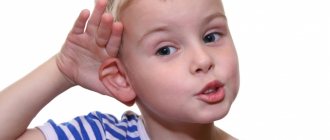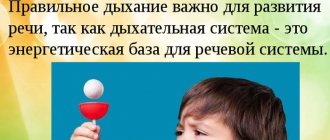Consultation via Skype or WhatsApp is available.
Neuropsychological correction is a specialized set of psychocorrection exercises for children from very early to adolescence, aimed at normalizing the functions of their brain and correcting various disorders and developmental delays.
The complex includes a series of special motor and breathing exercises aimed at improving articulation and development of the muscles of the speech apparatus, and cognitive training - games and tasks that stimulate the activation and development of higher mental functions in the child.
Our Center uses both classic body-oriented neurocorrection exercises and proprietary techniques that allow:
- quickly form compensatory skills,
- it is more effective to stimulate the development in a child of those functions of the central nervous system and PNS that determine motor activity and coordination of movements,
- improve cognitive (thinking) brain functions,
- activate the body's sensory systems.
Neuropsychological correction allows you to overcome disturbances in mental activity and speech development, absent-mindedness, memory and attention disorders.
The child’s psychological state normalizes, social adaptation improves, school performance increases, coordination improves, and performance increases.
To successfully carry out neuropsychological correction, it is necessary to first undergo special diagnostics.
Neuropsychological diagnostics
This is a comprehensive examination that allows us to identify the individual characteristics of the child’s physical, emotional and mental development. Based on the results of neuropsychological diagnostics, our Center’s specialists draw up an individual correction program and select methods that will be most effective for normalizing the child’s higher mental functions and correcting possible pathologies in the functional activity of the cerebral hemispheres.
Each correctional complex consists of complementary techniques that are selected for each child individually depending on the nature and degree of his or her impairments.
The correction program consists of two stages: motor and cognitive neurocorrection.
Causes of speech underdevelopment
Speech underdevelopment refers to a polyetiological defect, which can be either an independent pathology or as a consequence of more complex defects, including alalia, dysarthria, rhinolalia, etc.
Figure 1. Structure of a speech defect. Author24 - online exchange of student work
A pure speech defect includes unformed sound pronunciation and phonemic perception, a limited vocabulary and imperfect grammatical structure of the language.
The reasons for general speech underdevelopment may be:
- lack of correct conditions for the formation of a child’s speech in the family - lack of communication, deaf parents, a foreign nanny who does not speak Russian well;
- speech underdevelopment of children raised in orphanages;
- the use of different languages in the family and in preschool;
- unfavorable social conditions.
The reasons for general speech underdevelopment are biological and social in nature.
Among the biological factors may be maternal intoxication during pregnancy, group incompatibility of the blood of mother and fetus, pathology of the natal period, brain injuries in the first years of the child’s life, etc. A persistent variant of general speech underdevelopment is underdevelopment due to early organic damage to the brain, moreover, this is the most difficult defeat.
Note 2
Thus, the causes of speech disorders are quite complex and diverse. Typical manifestations of general speech underdevelopment are observed with alalia and dysarthria. With rhinolalia and stuttering, manifestations of speech underdevelopment are less common.
Figure 2. Levels of speech underdevelopment in children. Author24 - online exchange of student work
Motor neurocorrection
This method is successfully used to correct a wide range of developmental disorders and activation of higher mental functions of the brain (attention, imaginative perception of memory, emotional sphere, ability to think, etc.) in children of any age.
The techniques used are aimed at improving vestibular-motor coordination, improving fine and gross motor skills, developing basic sensory systems and launching self-regulation processes.
Correction of identified disorders contributes to the formation of compensatory skills and prepares the child’s body for full mastery of such vital skills as reading, writing, and counting.
Read more about motor neurocorrection
Advice for parents from neuropsychologists
Since parents often want to get immediate results, and sometimes get very annoyed when they are not there or the child does not show much desire to study, neuropsychologists give certain recommendations to mothers and fathers of children who are undergoing neurocorrection.
- Feel free to ask questions. If you don’t know something or have doubts, feel free to check with a specialist, don’t invent or cheat yourself into anything.
- Don't rush your child. You may have to put in a lot of work and patience before you see the first results.
- Remember that children don't really understand what they're doing wrong, why it's stressing everyone out so much, or what everyone wants from them.
- Don't make vague demands. When asking a child to perform an exercise, the instructions should be clear and understandable so that there is no misunderstanding.
- Homework can be completed in blocks rather than all at once. Distribute the exercises so that you and your child feel comfortable.
- Support and encourage him. Notice every achievement and change in your child. He needs your love most of all.
Thanks to neurocorrection, many children were able to overcome difficulties and gaps in development. This is important so that the child can lead a full life and not have problems with health and social interaction in the future. Parents should not forget that some developmental deviations appear due to errors in upbringing: for example, in the absence of proper attention and emotional intimacy. Love your children and learn to overcome obstacles together.
Cognitive neurocorrection
Cognitive neurocorrection is aimed at the development of the right hemisphere of the brain and the frontal lobes of the brain and is an important part of the correction program. Cognitive correction methods are used for disorders of the cognitive (mental) functions of the brain, which manifest themselves in difficulties in mastering educational materials and skills appropriate to the child’s age.
Each neurocorrection center pays great attention to the activation of higher functions of the brain - memory, written and oral speech, thinking, perception, because it is these functions that are responsible for the mental development of the child as a whole, the ability to express their thoughts, the successful development of reading, writing, mathematics and others school subjects.
To activate the cognitive functions of the brain in children, methods with proven effectiveness are used, which are selected individually based on the results of neuropsychological diagnostics.
Cognitive correction is recommended not only for difficulties in learning new materials, but also for some other developmental pathologies: inattention, poor handwriting, absent-mindedness, dyslexia, problems with mathematics, dysgraphia, limited vocabulary. The development of the cognitive sphere improves various types of memory, promotes the formation of visual-figurative, visual-effective and verbal-logical thinking.
Read more about cognitive neurocorrection
Focus of neurocorrection classes
Its focus may be:
- habilitation neurocorrection – when we are talking about a child who is maturing a particular area of the brain. For example, the posterior association cortex matures before age 11. And the fastest and most effective neurocorrection for this zone will be in the period up to 11 years (it is necessary if maturation occurs with insufficiency relative to the age norm). Upon reaching this age, the developmental period sensitive to influences ends, and neurons in this part of the brain form connections less actively. Therefore, classes on neuropsychological correction of the immaturity of this area of the brain after 11 years will be less effective, and their goal will be to compensate for the existing deficit not through a direct influence on this area, but in a “roundabout” way, through the “control center of the brain,” that is, the frontal shares. This path will be more energy-consuming, and the correction will take longer. Each brain zone has such periods of greatest sensitivity to influences, and they differ in time, since the brain develops unevenly. The neuropsychologist takes into account the maturation time of each brain zone when drawing up a training program.
- compensatory neurocorrection. Such activities are carried out for adults who have a deficiency of some mental function due to a stroke, traumatic brain injury, brain surgery, as well as for children if the necessary zones should have been formed by age, but have not matured enough relative to the age norm. In this case, the goal of the classes is to form new neural connections to rebuild the old functional system. For example, if the visual perception of letters and numbers is impaired in an adult after a stroke (letter agnosia), then the neuropsychologist will “connect” another analyzer: draw letters and numbers on the patient’s back, draw them with his fingers in the sand. Such training using other analyzers should be repeated. Thus, neural connections will be rebuilt, receiving new information, and will cover the existing deficit. The brain, having “seen” letters and numbers through the eyes, will recognize them not directly by visual outlines, but by recalling a kinesthetic image.
Of course, this division of activities is conditional.
Our advantages
Neuropsychological correction in our Center is carried out by experienced neuropsychologists - certified psychologists who have undergone special training in neuropsychology.
To correct pathologies in the development of higher brain functions, a multilevel approach is used. Based on the diagnostic results, an individual correction program is developed for each child, which takes into account age, developmental characteristics, the severity of the problems and the characteristics of the correction tasks set by the neuropsychologist.
Classes are held in a fun way, in a friendly atmosphere and cozy atmosphere of our Center. The duration and frequency of classes depend on the age of the child and the identified problems that need to be corrected.
A personal neuropsychologist works with each child, and if necessary, related specialists from our Center are also included in correctional work: psychologists, speech pathologists, speech therapists, biofeedback therapists, neurologists, child psychotherapists. Such an integrated approach makes the correction process as effective as possible and helps the child quickly overcome developmental delays and solve problems associated with disorders of higher mental functions and other brain pathologies, and improve school performance.
For children with developmental disabilities, neuropsychological correction helps improve their perception of the world around them and increase their social adaptation.
The goal of the assistance system is to improve the child’s mental development and develop everyday and communication abilities.
“Why does a child need a neuropsychologist?” — we tell you in detail when a child needs to be shown to a neuropsychologist and how he can help.
Who is hosting the reception?
The reception is conducted by the director of the center, neuropsychologist Olga Aleksandrovna Alexandrova. She is also a clinical psychologist and a licensed Tomatis® practitioner.
Alexandrova O.A. studied at the Institute. V.M. Bekhterev, regularly attends new courses and seminars to improve her skills.
If you are interested in neurocorrection, sign up for a consultation with a neuropsychologist by phone or fill out the application form on our website.
Neuropsychological techniques in the work of a speech therapist
Evseenkova Irina Vasilievna
Teacher speech therapist
MBDOU d.s. No. 16 “Sun”
compensating type ShchMR MO
Neuropsychological techniques in the work of a speech therapist
In recent years, it has been difficult to meet children simply with speech disorders. Even OHP in its pure form is not so common. We receive children with organic disorders who are diagnosed by neurologists with MMD, ADHD, and attention deficit disorder. This category of children, along with speech disorders, have problems with coordination, gross and fine motor skills, and perception. Children in this category are motorically awkward. They cannot throw the ball at the target and catch it, kick the ball into the goal, throw and catch the ball, or circle the object around the office, because here it is necessary to include visual control. They cannot understand and follow complex instructions. Since attention is scattered, children only catch some part. Hence, reading skills suffer in the future. The child constantly jumps from one letter to another, reads from left to right, then from right to left. It is difficult for a child to isolate the central line of the story, to sequence the plot reversal, and internal programming suffers. And school-age children are already coming to us who cannot master reading and writing. In order for the number of schoolchildren with the listed problems to decrease (and their number is steadily growing), it is necessary to solve all these problems in preschool age. Unfortunately, a speech therapist cannot begin full-fledged correctional work before 4 years of age (this is already physiology), and two or three years before school are sometimes not enough for correction. We thought for a long time about this issue, what and how to do so that our correction would be reduced in the time period. When we turned to the work of neuropsychologists, we changed our approach to correctional work. We began to include games in our work that help the child control his motor activity and develop attention. Games for the formation of interhemispheric interactions are of great importance in this process.
We begin our work with diagnostics.
Fluent speech requires serial organization of movements. The pronunciation of each word is a series of smoothly alternating articulatory movements. Speaking involves the extraction and implementation of articulatory word programs that ensure coordination of movements in time. The construction of a sentence also requires a consistent grammatical program, where the form of the predicate depends on the form of the subject, and the form of the complement depends on it. Finally, to construct a text, a consistent semantic program is necessary, otherwise the text will be broken and incoherent.
Thus, if the immaturity of the serial organization of movements is sufficiently pronounced and extends to speech, then in the child’s speech we will see a reduction in vocabulary, poverty of grammatical structure (short phrases using the simplest grammatical structures), difficulties in constructing a detailed story (the presentation is inconsistent, the volume of texts is reduced) . It is precisely the difficulties of constructing a text that are the most persistent.
How is the formation of the serial organization of movements determined?
First of all, it is necessary to analyze how the child masters a new series of movements. For this purpose, the teacher uses the “palm - fist - edge” test, the reciprocal coordination test and the graphic “fence” test. He looks to see whether the child can master a smooth (continuous, not element-by-element) automated execution of a movement, whether he has inertia or difficulty switching from one program to another. Repeating a series of syllables or vowel sounds can also serve this purpose.
A test for reciprocal (mutual) coordination of movements (simultaneous squeezing of one hand and unclenching of the other) is aimed at identifying the “formation” of the mechanisms of serial organization of movements and interhemispheric interaction.
Another direction of diagnostics is aimed at solving visual problems. If visual perception is impaired, correctional work should solve the following tasks:
1) development of visual attention,
2) development of “visual image – word” connections, differentiation of visual images and word meanings,
3) development of visual-gnostic and visual-mnestic processes, including different strategies of visual recognition.
Since if any of the components of visual perception is underdeveloped, the entire functional system as a whole suffers, at the first stage of work
Relatively simple tasks of a general nature are offered. These include tasks of the first methodological complex for identifying visual images. These tasks are implemented using the game “Loto” - the child finds a picture that matches the one presented. The complication of tasks occurs along two lines: gnostic and speech. Gnostic complexity increases as we move from color realistic pairs to pairs where one or both pictures are black and white, silhouetted, schematic, or stylized.
To consolidate the visual images being practiced, recognition and/or verbal reproduction tasks are used: tasks to select pictures or captions for them, remember how the pictures were arranged, etc.
Second set of tasks
– finding verbalized differences. Here, plot pictures are used for comparison. At first there are few objects on them and the simplest differences: the presence/absence of details, changes in color, shape, quantity.
Finding differences from memory (the child looks at only one picture while remembering another) is the most difficult type of task in this complex.
Third set of tasks
– perceptual modeling, i.e. recreating an object from parts. These tasks can vary greatly in difficulty.
The object design tasks included in this set are very useful. Unlike previous tasks, here the image of an object is divided into functionally significant parts, so adding a “handle” or “spout” and a “lid” allows you to transform the “pot” into a cup, sugar bowl, teapot. In this task, the distinctive features of objects are identified and named, which allows you to train the analytical strategy of perception and expand your vocabulary.
Fourth complex
– sensitized tasks. Various traditional image “noise” techniques are used here. Outline images are crossed out, overlapped or incomplete.
Based on our diagnostics, we offer children certain games.
Games
Mill
Target:
development of attention, control of motor activity.
Game conditions
. All players stand in a circle at a distance of at least 2 meters from each other. One of the players receives the ball and passes it to another, who passes it to the third, etc. Gradually the transmission speed increases. A player who misses the ball or throws it incorrectly is eliminated from the game. The winner is the one who remains in the game last.
Note. The game can be complicated by having someone beat out a rhythm to which the players will throw the ball to each other, i.e. using auditory attention. In addition, this rhythm can change (sometimes faster, sometimes slower).
Cinderella
Target:
development of attention distribution.
Conditions of the game.
The game involves 2 people. There is a bucket of beans (white, brown and colored) on the table. On command, you need to disassemble and arrange the beans into 3 piles according to color. The one who completes the task first wins.
Who is faster?
Target
: development of tactile perception, fine motor skills, consolidation of the visual image of the letter.
Game conditions
. Children are asked to form a given letter out of beans or peas as quickly as possible.
It is advisable to offer this task to the child during literacy classes to change types of activities. This activity is a great way to relieve stress and switch from one activity to another within the same topic.
Don't miss the ball
Target
: development of attention, ability to work in a team.
Conditions of the game.
The participants of the game stand in a circle and put their hands on each other’s shoulders. The driver stands in the middle of the circle, with a ball at his feet. The driver’s task is to kick the ball out of the circle. The players' task is not to release the ball. You can't separate your hands. If the ball flies over the hands or head of the players, the kick is not counted. But when the ball flies between the legs, the driver wins, becomes a player, and the one who missed the ball takes his place.
Stork frogs
Target:
attention training, control of motor activity, development of auditory attention, coordination of movements.
Conditions of the game.
All players walk in a circle or move around the room in a free direction. When the leader claps his hands once, the children should stop and take the “stork” pose (stand on one leg, arms to the sides). When the leader claps twice, the players take the “frog” pose (sit down, heels together, toes and knees to the sides, hands between the feet on the floor). After three claps, the players resume walking.
Note. You can come up with other poses, you can use a much larger number of poses - this makes the game more complicated. Let the children come up with new poses themselves.
Colored palms
Target:
development of attention, ability to act according to instructions, development of volitional regulation.
Game conditions
: The teacher, together with the children, cuts out three silhouettes of a child’s hand from multi-colored cardboard: red, yellow, green. Then all participants in the game agree that when the leader (first an adult, and then one of the children) raises his green palm - a “chant” - you can run, shout, jump; yellow palm - “whisper” - allows you to move and talk in a whisper; at the “silent” signal - a red palm - children must freeze in place or lie down on the floor and not move. The game should end with silence.
Ring throw
Target:
consolidate the ability to select words for a given sound, develop the ability to work in a team.
Game conditions
. The child is asked to choose a word that matches the given sound and hit the cone with the ring. If the game is played in a team, then the one with the most words and hits in a certain period of time wins.
The game helps to activate the vocabulary. Here we can, in a playful way, reinforce the concept of sound, the ability to choose a word for a given sound, the ability to hear ourselves and control our friends. Since the task is performed in a playful motor form, children do not get tired and their interest in learning increases.
Let's play with pictures
Target:
development of attention, its volume, stability, concentration, development of visual memory, automation of sound.
Game conditions:
A series of pictures on a certain topic are laid out in front of the child. The child explains what is depicted on them and what it is intended for. Then the instruction is given that the child must look carefully and remember in what sequence they are located. After this, the pictures are removed from view and posted only after being named by the child.
Find the sound
Target:
development of phonemic perception, auditory attention
A game to develop phonemic awareness in motion. Work is progressing well on determining the presence of a sound in a word.
Game conditions:
Children stand in a circle and are given instructions about what sound we are looking for in a word. The game is played with a ball. If the word has a given sound, then the child hits the floor with the ball; if not, then he throws it up and returns it to the leader. The game becomes more complicated by increasing the pace or by making the child the leader.
What item did I wish for?
Target
: development of visual attention, orientation in space, consolidation of the use of prepositional constructions in speech.
Game conditions:
Objects are laid out at different distances from each other. The child, depending on his ability, is given instructions. For example, go to an object that is to the right of the ball, but closer than the doll. Or go to the object that is closest to you, farthest from the ball. Then you can ask where the doll, ball, etc. is located. In this way, we strengthen the child’s ability to navigate space, listen carefully to instructions, and correctly use prepositional constructions.
Monkeys
Target:
interaction of eye movements, tongue, arms, legs as a single well-functioning mechanism.
Game conditions:
The child is asked to open his mouth, eyes and palms at the same time upon a signal, and close his hands at the same time at a signal.
"Snowball"
Target:
development of attention, memory, overcoming impulsiveness, expanding vocabulary on a certain topic.
Conditions of the game.
The theme of the game is selected: cities, animals, plants, names, etc. players sit in a circle. The first player names a word on a given topic, for example “elephant” (if the topic of the game is “Animals”). The second player must repeat the first word and add his own, for example, “elephant”, “giraffe”. The third says: “elephant”, “giraffe”, “crocodile”. And so on in a circle until someone makes a mistake. Then he drops out of the game and makes sure that the others do not make mistakes. And so on until there is only one winner left.
Note. In a similar way, you can come up with a “Detective”, putting together a plot one word at a time. For example: “Night”, “street”, “steps”, “scream”, “blow”, etc. You can allow children to prompt each other, but only using gestures.
"Hello finger"
Target
: development of fine motor skills, differentiation of sounds, formation of interhemispheric connections, concentration of attention. This task is good for differentiating mixed sounds.
Game conditions
. We invite the child to connect the fingers of his right hand, pronouncing syllables with the consonant “Ш”, and of his left hand, with the consonant “S”. The work becomes more difficult when the teacher gives different syllables.
Literature:
1. Collection ed. P.N. Loseva, Correction of speech and mental development of children 4-7 years old. - M., 2005
2. Kiryanova R.A. Comprehensive diagnostics of preschool children. - S-P., 2002
3. Lalaeva R.I. Speech therapy work in correctional classes. - M., 2004
4. Efimov I.O. Modern neurophysiology of speech and hearing.-S-P., 2009
5. Semenovich A.V. Neuropsychological correction in childhood.-M., 2011
6. Zabramnaya S.D., Barovik O.V. From diagnosis to development. - M., 2004









